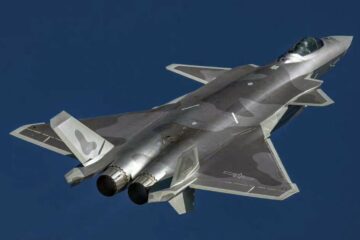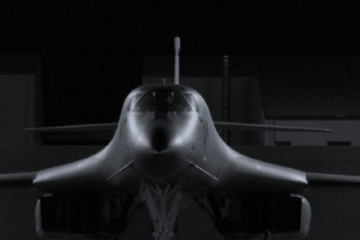Last Updated on 08/06/2022 by AIR OPERATIONS
These are our picks for this week. As usual, all content is external and as such is not covered under AIR Privacy policy except for our comments.
Economics
Much is unfolding. Post pandemic events were always going to be tumultuous at best as we had anticipated back in April 2020. The US economy, drunk on excess liquidity, will take time to rebalance itself and is likely facing a significant slowdown by the end of Q3 2022.
Global growth is expected to slump from 5.7 percent in 2021 to 2.9 percent in 2022— significantly lower than 4.1 percent that was anticipated in January. It is expected to hover around that pace over 2023-24
Again – we view this current situation as having been greatly influenced by the excessive partisanship and lack of economic and fiscal policy stability in the United States.
Surging energy and food prices heighten the risk of a prolonged period of global stagflation reminiscent of the 1970s. Broad-based inflationary pressures in the United States may precipitate more aggressive monetary tightening, potentially triggering financial stress in emerging market and developing economies (EMDEs). Global growth could be substantially
weaker if key downside risks were to materialize. Despite central bank rate hikes, real rates remain low amid high inflation, suggesting that further policy tightening may be needed. To address rising food insecurity, EMDE policy makers can deploy targeted support rather than distortionary price controls, which are already widespread.
Here is link to the World Bank Global Economic Prospects
Aircraft OEMs
The highlight of the week is Guillaume Faury’s keynote discussion at the Paris Air Forum
- Guillaume Faury does not expect demand to be affected by current geopolitical and economical stresses.
- He has indicated that air transport is witnessing a faster than anticipated (Note AIR: Mr. Friedman’s Plucking effect). The key issue are resources to satisfy this pent-up demand.
- The aerospace supply chain will continue to suffer from global logistic misalignments. In his own words, we went from a “perfectly well oiled machine” to a more resilient supply chain: a “Just in time to just in case” supply chain
- China is a concern, the geopolitics and block politics are raising longer term questions. He views international trade as interdependent and very deeply embedded in the supply chain.
- He does not expect a decoupling but rather a derisking with China in the event of a crisis
- European security will require spending above what was currently the norm over the past 30 years. International alliances will be integral to addressing future conflicts.
- Resources will be increasingly limited and military organizations will be more than ever required to face these issues
- The EU rearming is a phased approach, near term is about addressing urgent needs, other longer term requirements will need to be analyzed and preferably sourced in Europe.
- Guillaume Faury’ strategy is progressive. The first H2 aircraft will be delivered in 2035 to achieve a complete transformation by 2050. He believes that the current generation of aircraft will contribute significantly to CO2 reduction.
- He also believes that a”sustainable” fuel supply chain is the key challenge. He anticipates a program launch by 2028.
- There will be a variety of solutions developed in parallel to replace the A320. He also believe that solutions will have to be implemented at the regional level first.
- Guillaume Faury’s interview is in French and begins at 8h25. Sorry it’s in French and cc does not work.
Supply Chain
Alex Krutz is again our feature of the week. Alex was invited by JP Morgan to discuss supply chain issues.
We cannot post the JP Morgan note for obvious reasons but here are some soundbites:
737 ramp looks challenging.
Rework will affect pace of 787 deliveries.
While the A320neo family ramp is not without challenges, it seems to be proceeding reasonably well
Encouraging Pratt comments despite near-term delays.
Titanium landscape evolving. Alex noted that US suppliers, such as HWM and ATI, stand to gain share as demand migrates away from Russia’s VSMPO.
Lower tier suppliers may need support. Alex noted that while Tier 1 and Tier 2 suppliers should be in relatively good shape, smaller ones may need assistance as they struggle to ramp production, bring back people, and generate cash.
Please reach out to Alex here if you need additional information
Geopolitics
A complex article from a German author about the EU after the Ukraine. Wolfgang Streeck is director emeritus of the Max Planck Institute for the Study of Societies in Cologne.
After the global financial crisis of 2008 and its spread to Europe after 2009, the EU and EMU began to fracture along several dimensions, their economic, ideological, and coercive capacities for integration becoming increasingly overtaxed. On the EU’s western flank, Brexit was the first case of a member state leaving a Union that ideologically considers itself permanent.
One may be summarized as a strategy of more unity through less unity, or of retrenchment—if not territorially, then functionally—by rolling back some major elements of the EU’s “ever closer union of the peoples of Europe.”
Above all, the reintegration of the West under American leadership settled the old issue of the relationship between NATO and the EU in favor of a division of labor that established the primacy of the former over the latter. In an interesting way, this seems to have healed the division between continental Europe and the United Kingdom that had opened in the course of Brexit.
A very detailed piece, that may suffer from a touch of anti Americanism at the end, but very well argumented nevertheless.
This (long) piece can be found here
Technology
Manufacturing.net has a good piece about the role of 5G in the factory of the future (based on a Deloitte study)
5G is increasingly enabling industrial organizations to take advantage of powerful edge computing to bridge the traditional gap between digital and physical operations.
Like other industrial infrastructure, manufacturing machinery and software are often deployed for 10,15 or 20 years, or longer. System designers need to future-proof their solutions so they are architected to remain impenetrable from any attack from any internal or external source for decades. Here again, containerized software can allow for segments of the software to be updated or upgraded without the need to replace the entire system.
The article can be found here
The 2019 Deloitte study here
Commercial Aviation
The A321XLR fuel tank has been subjected to significant scrutiny on the part of EASA and others.
Based on our information, we expect the first delivery to take place no sooner than Q2 2024, 4-6 months behind schedule
Newly proposed EASA regulations for the Airbus A321XLR include ensuring rear center tank fuel vapor does not ignite for at least 5 min.
Defense
SCAF is facing delays and Eric Trappier is not happy about it.
The industrial tensions between Airbus and Dassault, meaning France and Germany may place the program a decade behind schedule according to the Dassault CEO.
In the meantime, we believe that this is good news for Rafale F5 which is planned for the early to mid 2030s. The aircraft will like boast higher MTOW with a reconfigured cockpit, Spectra II, higher thrust engines and targeted airframe modifications. The F5 will also be able to control a swarm of lethal UAS.
Dassault is particularly concerned with its flight control systems IP and the sharing of this information with Germany.



